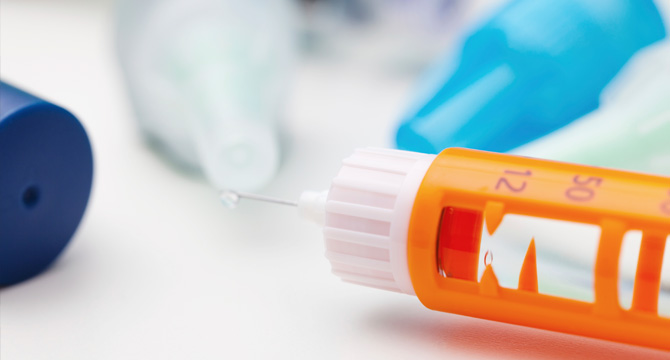CAFC Finds ANDA Infringement Despite Differences Between FDA Labeling And Claim Language

In a non-precedential decision issued in Braintree Labs., Inc. v. Breckenridge Pharmaceutical, Inc., the Federal Circuit reversed the district court’s grant of summary judgment of noninfringement in favor of Breckenridge, and remanded for entry of judgment in favor of Braintree. In reaching its decision, the court held Breckenridge to its previous stipulations, and found that proposed ANDA labeling for “colon cleansing” induced infringement of claims directed to “inducing purgation.”
The Patent At Issue
The patent at issue was Braintree’s U.S. Patent 6,946,149, which is listed in the Orange Book for its SUPREP® Bowel Prep Kit for preparing patients for colonoscopies. Reexamined claim 15 was treated as representative (emphasis added to terms at issue):
- A composition for inducing purgation of the colon of a patient, the composition comprising from about 100 mL to about 500 mL of an aqueous hypertonic solution comprising an effective amount of Na2SO4, an effective amount of MgSO4, and an effective amount of K2SO4, wherein the composition does not produce any clinically significant electrolyte shifts and does not include phosphate.
The district court granted Breckenridge’s motion for summary judgment of noninfringement because its product “is administered as 946 ml of aqueous solution, and thus falls outside the recited volume range.” In reaching this decision, the court construed the volume limitation as “the entire volume of solution administered to a patient over a treatment period rather than the volume of a single bottle, or half-dose.” The district court also found “that Breckenridge’s ANDA label could not induce infringement under § 271(e)” because “inducing purgation [as claimed] without ‘achieving a fully cleansed colon’ is not an FDA-approved use of Breckenridge’s product.”
Braintree’s SUPREP® product also is administered at a volume of 946 ml, in divided doses. Thus, it seems that if Breckenridge’s ANDA does not infringe the ‘149 patent, the ‘149 patent would not cover Braintree’s product either.
The Prior Novel Litigation
The Federal Circuit previously considered the ‘149 patent in ANDA litigation between Braintree and Novel, which you can read more about in this article. In that case, the Federal Circuit upheld the district court’s claim construction, which interpreted “purgation” as “an evacuation of a copious amount of stool from the bowels after oral administration of the solution.” Although the district court had granted summary judgment of noninfringement in view of its claim construction, the Federal Circuit vacated that ruling.
In so doing, the Federal Circuit explained that one bottle of product could infringe under that claim construction even if two are required for full cleansing since the claims only recite “inducing purgation.”
Breckenridge’s Stipulations
While the Novel case was on appeal, Breckenridge stipulated to the district court’s construction of “purgation” in Novel, and “further stipulated to ‘be bound by a final decision in the Novel Case . . . on any issues having to do with patent invalidity . . . and non-infringement’ other than the ‘from about 100 ml to about 500 ml’ limitation.”
The Federal Circuit Decision in Breckenridge
The Federal Circuit decision was authored by Judge Moore and joined by Judges Newman and Wallach. As the opinion explains, the issues on appeal “center[ed] on the relationship between the ‘purgation’ and [volume] limitations,” and the extent of the preclusive effect of Novel on the construction of the volume limitation. The Federal Circuit also addressed the relevance of the differences between the proposed ANDA label and the claim language.
On the first issue, Breckenridge argued that Novel was not controlling because the volume limitation was not at issue in that case, but the Federal Circuit disagreed. The court reviewed the record in Novel, and found that “[t]he meaning of the [volume] term … was necessarily connected to our construction of ‘purgation,” and that “Novel intertwined the volume and purgation limitations throughout its briefing.” The court explained:
In Novel, this court construed “from about 100 ml to about 500 ml” to be the amount of the composition that induces “purgation,” which is less than full cleansing.
The Federal Circuit emphasized that it was Breckenridge’s own stipulations that bound it to “a claim construction decision in which it was neither a party nor in privity with one.”
On the second issue, Breckenridge argued that its ANDA labeling did not induce infringement of the claims, because “colon cleansing” is different from “inducing purgation” of the colon. The Federal Circuit disagreed with the district court’s finding that “inducing purgation” is a distinct use rather than “a mechanism to achieve the goal of full colon cleansing.” The Federal Circuit distinguished the facts at hand from other cases finding that proposed ANDA labels would not induce infringement where the indicated use was different from the claimed use.
[I]nducing purgation is not a distinct use of Breckenridge’s proposed product; inducing purgation is the means by which the approved indication achieves its result. …. Breckenridge concedes that its proposed product “cleanses the colon of a patient by inducing purgation” when taken as directed by its label.
The Federal Circuit continued:
We hold that Breckenridge’s labeled indication for colon cleansing “recommends or suggests to physicians that the drug is safe and effective for administration to patients for the purposes of inducing [purgation].” …. Because Breckenridge’s ANDA label “instruct[s] how to engage in an infringing use, [it] show[s] an affirmative intent that the product be used to infringe.”
In view of these findings and other stipulations Breckenridge had made, the Federal Circuit reversed the district court’s grant of summary judgment and remanded with an instruction to enter judgment for Braintree.
Differences Between Label Language And Claim Language
This decision shows that differences between proposed ANDA labeling and claim language will not always lead to a finding of noninfringement. In its decision, the Federal Circuit distinguished a number of cases where such differences did preclude liability for inducing infringement, but drew a line here. Although this decision is non-precedential, the court’s discussion of purgation as the “mechanism” by which colon cleansing is achieved may be of interest to patents that claim the underlying mechanism of action by which an active agent exerts its therapeutic effect.

